New Media and Communication
Today’s media companies are seeking communication and media professionals who not only can perform the duties of a journalist or a public relations or advertising practitioner, but who are also comfortable with visual design and content production for digital media—e.g. online publications, blogs, podcasts, virtual communities, interactive advertising.
About
New Media and Communication at ARUCAD is uniquely positioned to prepare students for today’s converging media environment, where communication professionals are expected to have a broad range of knowledge and creative skills, from critical thinking and excellent writing to the ability to create interactive media, digital arts, and strategic communication campaigns.
Students who opt for the New Media and Communication Department at ARUCAD shall surely benefit from a contemporary understanding of emerging trends in the evolving communication industry, as well as receiving guidance for connecting classroom learning with local and global market mechanisms.
Programme Type
Bachelor Degree
Duration
4 Years
Head of Department
Asst. Prof. Dr. Çağdaş Öğüç
- info@arucad.edu.tr
- +90 (392) 650 65 55
- ARUCAD Main Campus
Academic Staff
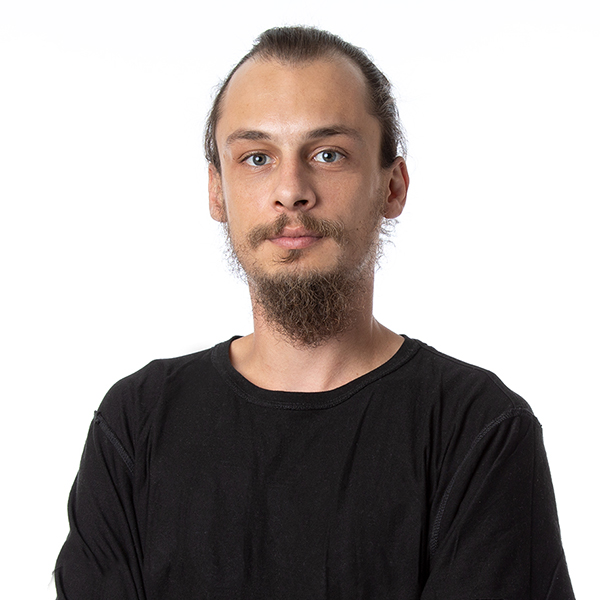
Asst. Prof. Dr. Çağdaş Öğüç
Head of Department
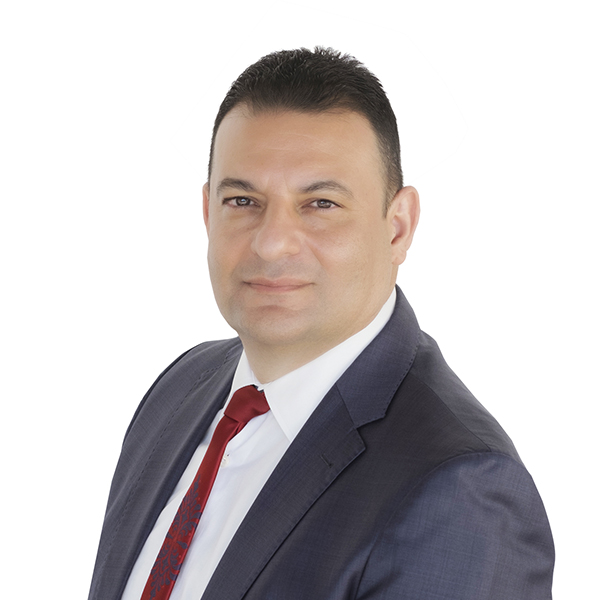
Prof. Dr. Asım Vehbi
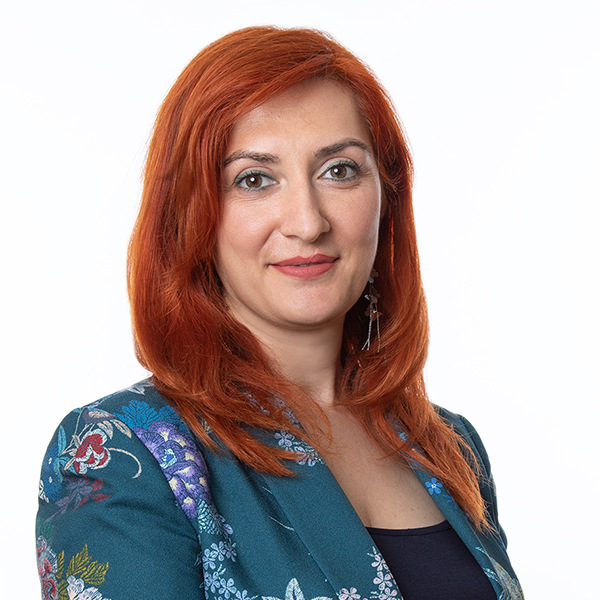
Prof. Dr. Nezahat Doğan
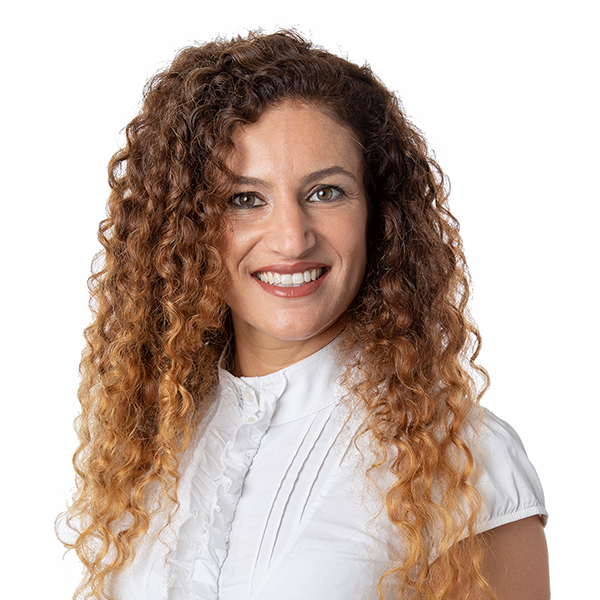
Assoc. Prof. Dr. Nuran Öze
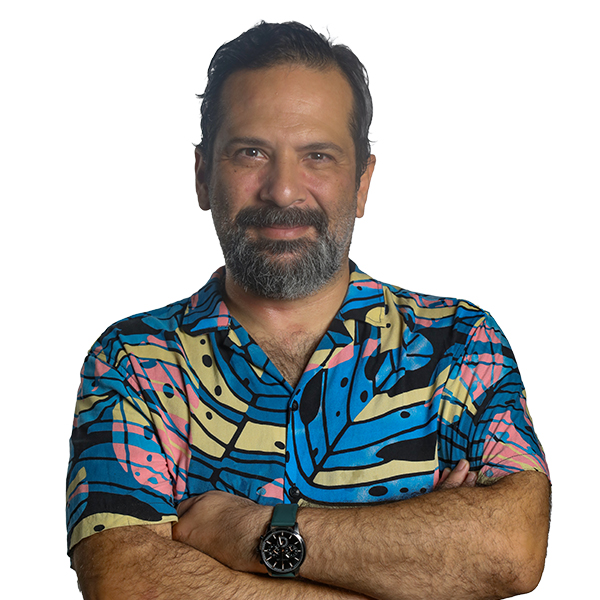
Asst. Prof. Dr. Tayfun Bilgin
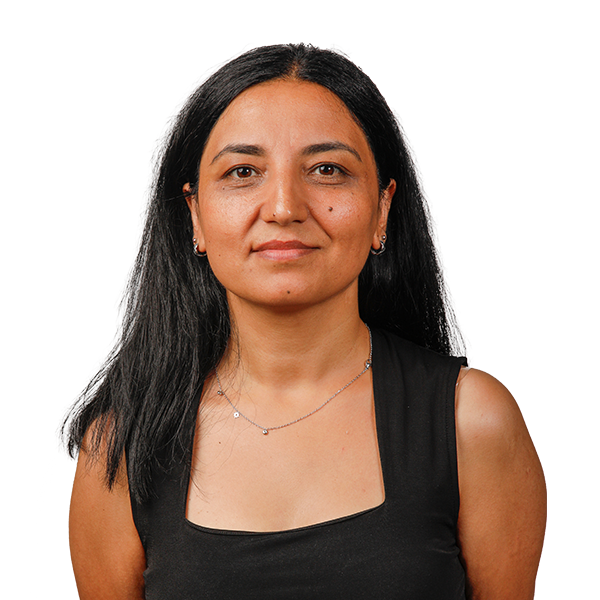
Dr. Serpil Karaaslan

Dr. Ali Çağan Uzman
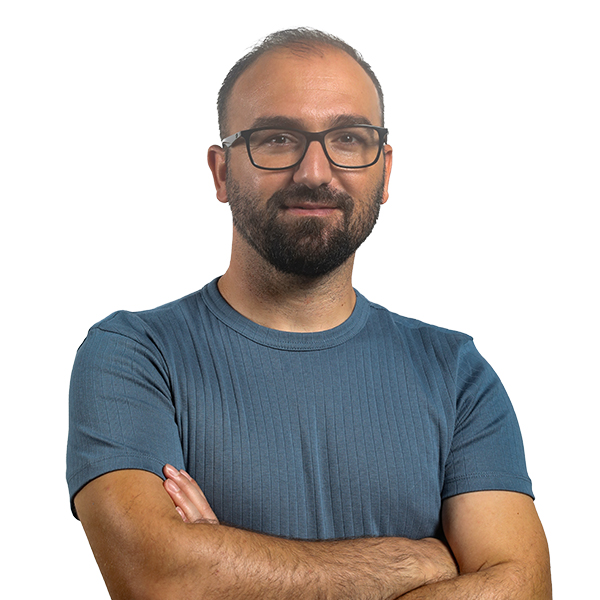
Res. Assist. Yusuf Uzun
| YEAR 1 | |||||||||
| FALL | |||||||||
| Course No | Semester | Course Code | Course Name | Course Category | Credit | ||||
| T | P | L | K | ECTS | |||||
| 1 | 1 | İLET101 | Fundamentals of Communication | FC | 3 | 0 | 0 | 3 | 5 |
| 2 | 1 | İLET105 | Social Psychology | FC | 3 | 0 | 0 | 3 | 5 |
| 3 | 1 | İLET107 | Basic Photography | FC | 1 | 4 | 0 | 3 | 6 |
| 4 | 1 | YMED105 | Digital Design Concepts | AC | 2 | 2 | 0 | 3 | 5 |
| 5 | 1 | YMED107 | Media Literacy | AC | 3 | 0 | 0 | 3 | 5 |
| 6 | 1 | INGL101 | Academic English I | UC | 3 | 0 | 0 | 3 | 4 |
| Total Credits | 15 | 6 | 0 | 18 | 30 | ||||
| SPRING | |||||||||
| Course No | Semester | Course Code | Course Name | Course Category | Credit | ||||
| T | P | L | K | ECTS | |||||
| 7 | 2 | İLET106 | Sociology of Communication | FC | 3 | 0 | 0 | 3 | 5 |
| 8 | 2 | İLET108 | Digital Marketing | FC | 3 | 0 | 0 | 3 | 5 |
| 9 | 2 | İLET122 | Digital Storytelling | FC | 2 | 2 | 0 | 3 | 5 |
| 10 | 2 | YMED102 | Web Technologies | AC | 2 | 2 | 0 | 3 | 5 |
| 11 | 2 | YMED106 | Computer Graphics and Image | AC | 2 | 2 | 0 | 3 | 6 |
| 12 | 2 | INGL102 | Academic English II | UC | 3 | 0 | 0 | 3 | 4 |
| Total Credits | 15 | 6 | 0 | 18 | 30 | ||||
| YEAR 2 | |||||||||
| FALL | |||||||||
| Course No | Semester | Course Code | Course Name | Course Category | Credit | ||||
| T | P | L | K | ECTS | |||||
| 13 | 3 | İLET201 | Theories of Communication | FC | 3 | 0 | 0 | 3 | 5 |
| 14 | 3 | YMED205 | Publishing | AC | 2 | 2 | 0 | 3 | 6 |
| 15 | 3 | YMED215 | Digital Typography | AC | 2 | 2 | 0 | 3 | 5 |
| 16 | 3 | YMED219 | Professional English I | AC | 3 | 0 | 0 | 3 | 5 |
| 17 | 3 | AIIT201 | Atatürk Principles and History of Revolutions I | UC | 2 | 0 | 0 | 2 | 2 |
| 18 | 3 | TUDI201 | Turkish Language I | UC | 2 | 0 | 0 | 2 | 2 |
| 19 | 3 | Area Elective I | AE | 3 | 0 | 0 | 3 | 5 | |
| Total Credits | 17 | 4 | 0 | 19 | 30 | ||||
| SPRING | |||||||||
| Course No | Semester | Course Code | Course Name | Course Category | Credit | ||||
| T | P | L | K | ECTS | |||||
| 20 | 4 | İLET204 | Innovative Approaches | FC | 3 | 0 | 0 | 3 | 5 |
| 21 | 4 | İLET206 | Communication Law and Ethics | FC | 3 | 0 | 0 | 3 | 5 |
| 22 | 4 | YMED202 | Podcasting and Blogging | AC | 2 | 2 | 0 | 3 | 6 |
| 23 | 4 | YMED220 | Professional English II | AC | 3 | 0 | 0 | 3 | 5 |
| 24 | 4 | AIIT202 | Atatürk Principles and History of Revolutions II | UC | 2 | 0 | 0 | 2 | 2 |
| 25 | 4 | TUDI202 | Turkish Language II | UC | 2 | 0 | 0 | 2 | 2 |
| 26 | 4 | Area Elective II | AE | 2 | 2 | 0 | 3 | 5 | |
| Total Credits | 16 | 4 | 0 | 19 | 30 | ||||
| YEAR 3 | |||||||||
| FALL | |||||||||
| Course No | Semester | Course Code | Course Name | Course Category | Credit | ||||
| T | P | L | K | ECTS | |||||
| 27 | 5 | İLET301 | Research Methods in Social Sciences | FC | 3 | 0 | 0 | 3 | 5 |
| 28 | 5 | YMED301 | Writing Skills | AC | 2 | 2 | 0 | 3 | 5 |
| 29 | 5 | YMED313 | Infographic Design | AC | 2 | 2 | 0 | 3 | 5 |
| 30 | 5 | YMED315 | Motion Design and Visual Effects | AC | 2 | 2 | 0 | 3 | 5 |
| 31 | 5 | Area Elective III | AE | 2 | 2 | 0 | 3 | 5 | |
| 32 | 5 | Faculty Elective I | FE | 2 | 2 | 2 | 3 | 5 | |
| Total Credits | 12 | 10 | 0 | 18 | 30 | ||||
| SPRING | |||||||||
| Course No | Semester | Course Code | Course Name | Course Category | Credit | ||||
| T | P | L | K | ECTS | |||||
| 33 | 6 | İLET302 | Creative and Critical Thinking | FC | 3 | 0 | 0 | 3 | 5 |
| 34 | 6 | YMED304 | Digital Media Portfolio | AC | 2 | 2 | 0 | 3 | 5 |
| 35 | 6 | YMED308 | Internship | AC | 0 | 0 | 0 | 0 | 5 |
| 36 | 6 | YMED318 | Interactive Design | AC | 2 | 2 | 0 | 3 | 5 |
| 37 | 6 | Area Elective IV | AE | 2 | 2 | 2 | 3 | 5 | |
| 38 | 6 | Faculty Elective II | FE | 3 | 0 | 0 | 3 | 5 | |
| Total Credits | 12 | 6 | 0 | 15 | 30 | ||||
| YEAR 4 | |||||||||
| FALL | |||||||||
| Course No | Semester | Course Code | Course Name | Course Category | Credit | ||||
| T | P | L | K | ECTS | |||||
| 39 | 7 | İLET401 | Digital Aesthetics | FC | 3 | 0 | 0 | 3 | 5 |
| 40 | 7 | İLET403 | Creative Pitching | FC | 2 | 4 | 0 | 4 | 10 |
| 41 | 7 | Area Elective V | AE | 2 | 2 | 2 | 3 | 5 | |
| 42 | 7 | Faculty Elective III | FE | 2 | 2 | 2 | 3 | 5 | |
| 43 | 7 | University Elective I | UE | 3 | 0 | 0 | 3 | 5 | |
| Total Credits | 12 | 8 | 0 | 16 | 30 | ||||
| SPRING | |||||||||
| Course No | Semester | Course Code | Course Name | Course Category | Credit | ||||
| T | P | L | K | ECTS | |||||
| 44 | 8 | YMED402 | New Generation Media | AC | 3 | 0 | 0 | 3 | 5 |
| 45 | 8 | YMED404 | Final Project | AC | 2 | 4 | 0 | 4 | 10 |
| 46 | 8 | Area Elective VI | AE | 2 | 2 | 2 | 3 | 5 | |
| 47 | 8 | Faculty Elective IV | FE | 2 | 2 | 2 | 3 | 5 | |
| 48 | 8 | University Elective II | UE | 3 | 0 | 0 | 3 | 5 | |
| Total Credits | 12 | 8 | 0 | 16 | 30 | ||||
| AREA ELECTIVE COURSES | ||||||||
| Course No | Semester | Course Code | Course Name | Credit | ||||
| T | P | L | K | ECTS | ||||
| 1. | 3 | YMED207 | Dynamic Web Design | 2 | 2 | 0 | 3 | 5 |
| 2. | 3 | YMED209 | History of Digital Media | 3 | 0 | 0 | 3 | 5 |
| 3. | 3 | YMED211 | Narrative Types in Media | 2 | 2 | 0 | 3 | 5 |
| 4. | 3 | YMED217 | Video Production | 2 | 2 | 0 | 3 | 5 |
| 5. | 3 | YMED221 | Vectorial Drawing | 2 | 2 | 0 | 3 | 5 |
| 6. | 4 | YMED206 | Social Media Content Management | 2 | 2 | 0 | 3 | 5 |
| 7. | 4 | YMED208 | Digital Media Theories | 3 | 0 | 0 | 3 | 5 |
| 8. | 4 | YMED210 | Design For Media | 2 | 2 | 0 | 3 | 5 |
| 9. | 4 | YMED214 | Political Communication Campaigns | 3 | 0 | 0 | 3 | 5 |
| 10. | 4 | YMED216 | Media Ethics | 3 | 0 | 0 | 3 | 5 |
| 11. | 4 | YMED218 | Commercial Photography | 2 | 2 | 0 | 3 | 5 |
| 12. | 4 | YMED222 | Strategic Communication and Management | 3 | 0 | 0 | 3 | 5 |
| 13. | 4 | YMED226 | Investigative Journalism | 3 | 0 | 0 | 3 | 5 |
| 14. | 5 | YMED305 | Intercultural Digital Communication | 3 | 0 | 0 | 3 | 5 |
| 15. | 5 | YMED309 | Viral Advertising | 2 | 2 | 0 | 3 | 5 |
| 16. | 5 | YMED311 | Media, Power and Culture | 3 | 0 | 0 | 3 | 5 |
| 17. | 5 | YMED317 | Typography | 2 | 2 | 0 | 3 | 5 |
| 18. | 6 | YMED310 | Sound Effect Design | 2 | 2 | 0 | 3 | 5 |
| 19. | 6 | YMED312 | Video Studies | 2 | 2 | 0 | 3 | 5 |
| 20. | 6 | YMED314 | Financial Literacy | 3 | 0 | 0 | 3 | 5 |
| 21. | 7 | YMED401 | Creative Coding | 2 | 2 | 0 | 3 | 5 |
| 22. | 7 | YMED403 | Freedom of Expression | 3 | 0 | 0 | 3 | 5 |
| 23. | 7 | YMED405 | Perception and Visual Reading in Design | 2 | 2 | 0 | 3 | 5 |
| 24. | 7 | YMED407 | 2D Animation | 2 | 2 | 0 | 3 | 5 |
| 25. | 8 | YMED410 | Creative Advertising Design | 2 | 2 | 0 | 3 | 5 |
| FACULTY ELECTIVE COURSES | ||||||||
| Course No | Semester | Course Code | Course Name | Credit | ||||
| T | P | L | K | ECTS | ||||
| 1. | 5 | İLET104 | Behavioral Sciences | 3 | 0 | 0 | 3 | 5 |
| 2. | 5 | İLET305 | Communication and Art | 3 | 0 | 0 | 3 | 5 |
| 3. | 5 | İLET307 | Diction and Elocution | 3 | 0 | 0 | 3 | 5 |
| 4. | 6 | İLET308 | Peace Journalism | 3 | 0 | 0 | 3 | 5 |
| 5. | 6 | İLET312 | Media Law and Ethics | 3 | 0 | 0 | 3 | 5 |
| 6. | 6 | İLET316 | Social Psychology | 3 | 0 | 0 | 3 | 5 |
| 7. | 7 | İLET405 | Analysis of Music in Communication | 3 | 0 | 0 | 3 | 5 |
| 8. | 7 | İLET407 | Social Media Management | 2 | 2 | 0 | 3 | 5 |
| 9. | 8 | İLET406 | Film Analysis | 3 | 0 | 0 | 3 | 5 |
| 10. | 8 | GİTA103 | History of Visual Communication | 3 | 0 | 0 | 3 | 5 |
| UNIVERSITY ELECTIVE COURSES | ||||||||
| Course No | Semester | Course Code | Course Name | Credit | ||||
| T | P | L | K | ECTS | ||||
| 1. | 7 | OYNC223 | Voiceover | 3 | 0 | 0 | 3 | 5 |
| 2. | 7 | OYNC225 | Performing Arts Management and Communication | 3 | 0 | 0 | 3 | 5 |
| 3. | 7 | ÜNIV401 | Sustainability | 3 | 0 | 0 | 3 | 5 |
| 4. | 8 | OYNC224 | Philosophy of Art | 3 | 0 | 0 | 3 | 5 |
| 5. | 8 | MSSF321 | Pop Culture | 3 | 0 | 0 | 3 | 5 |
| No | Programme Learning Outcomes |
| 1 | Knows the historical development of the field of communication, basic concepts, theories and research methods. |
| 2 | Knows the principles and elements of basic design. |
| 3 | Has knowledge about new media history, theories and theoreticians. |
| 4 | Knows the structural, managerial and technical characteristics of new media. |
| 5 | Can follow the developments and format changes in the digital world and apply them in multimedia productions created by adapting to them. |
| 6 | Has knowledge about new media literacy. |
| 7 | Develop an understanding of the impact and importance of visual culture in its various global forms. |
| 8 | Have knowledge of laws, regulations, legislation, and professional ethical values related to the field. |
| 9 | Have the ability to understand and critically analyze new media content. |
| 10 | Designs, implements and develops environments related to content production and management by analyzing data for digital platforms. |
| 11 | Learns to communicate and market the created works in different global forms on various digital platforms. |
| 12 | Has the ability to use research methods and techniques in the field of new media. |
| 13 | Has the ability to use digital platforms effectively in visual design issues. |
| 14 | Has the competence of handling and analyzing messages in the field of new media from a critical perspective. |
| 15 | Has the competence of research, planning, implementation and reporting at the project stage. |
| 16 | Has the competence to develop new media products with creative thinking, entrepreneurship and original perspective. |
| 17 | Has the competence to create and present a comprehensive digital portfolio of his/her works including research, thesis, news articles, films, websites, photo essays and animations. |
| 18 | Evaluates the effects of artificial intelligence on the new media ecosystem; knows, applies and analyzes creative content production, distribution and interaction processes using techniques such as machine learning, natural language processing and computer vision. |
| 19 | Have the ability to analyze ethical dimensions and the responsibility to act ethically while incorporating artificial intelligence into their work. |
| YEAR 1 | ||||||||||
| FALL | ||||||||||
| Course No | Semester | Course Code | Course Name | Course Category | Credit | Pre-requisite | ||||
| T | P | L | C | ECTS | ||||||
| 1 | 1 | İLET101 | Fundamentals of Communication | FC | 3 | 0 | 0 | 3 | 5 | |
| 2 | 1 | İLET103 | Media Literacy | AC | 3 | 0 | 0 | 3 | 5 | |
| 3 | 1 | YMED101 | Media Skills | AC | 2 | 2 | 0 | 3 | 5 | |
| 4 | 1 | YMED105 | Digital Design Concepts | AC | 1 | 4 | 0 | 3 | 5 | |
| 5 | YDEM103 | Basic Photography | AC | 2 | 2 | 0 | 3 | 6 | ||
| 6 | 1 | INGL101 | Academic English I | UC | 3 | 0 | 0 | 3 | 4 | |
| Total Credits | 14 | 6 | 0 | 18 | 30 | |||||
| SPRING | ||||||||||
| Course No | Semester | Course Code | Course Name | Course Category | Credit | Pre-requisite | ||||
| T | P | L | C | ECTS | ||||||
| 7 | 2 | ILET122 | Digital Storytelling | FC | 2 | 2 | 0 | 3 | 5 | |
| 8 | 2 | ILET102 | History of Communication | FC | 3 | 0 | 0 | 3 | 5 | |
| 9 | 2 | YMED102 | Web Technologies | AC | 2 | 2 | 0 | 3 | 6 | |
| 10 | 2 | RKLM132 | Creative Advertising Design | AC | 2 | 2 | 0 | 3 | 5 | |
| 11 | 2 | GITA132 | Computer Graphics and Image | AC | 2 | 2 | 0 | 3 | 3 | |
| 12 | 2 | INGL102 | Academic English II | UC | 3 | 0 | 0 | 3 | 4 | |
| Total Credits | 14 | 8 | 0 | 18 | 30 | |||||
| YEAR 2 | ||||||||||
| FALL | ||||||||||
| Course No | Semester | Course Code | Course Name | Course Category | Credit | Pre-requisite | ||||
| T | P | L | C | ECTS | ||||||
| 13 | 3 | ILET201 | Theories of Communication | FC | 3 | 0 | 0 | 3 | 5 | |
| 14 | 3 | TUDI201 | Turkish Language I | UC | 2 | 2 | 0 | 2 | 2 | |
| 15 | 3 | YMED203 | Digital Media Marketing | AC | 2 | 2 | 0 | 3 | 5 | |
| 16 | 3 | YMED205 | Publishing | AC | 2 | 2 | 0 | 3 | 6 | |
| 17 | 3 | AIIT201 | Atatürk Principles and History of Revolutions I | UC | 2 | 0 | 0 | 2 | 2 | |
| 18 | 3 | YMED201 | Game Design Concepts | AC | 2 | 2 | 0 | 3 | 5 | |
| 19 | 3 | AE | Area Elective I | AE | 3 | 0 | 0 | 3 | 5 | |
| Total Credits | 16 | 8 | 0 | 19 | 30 | |||||
| SPRING | ||||||||||
| Course No | Semester | Course Code | Course Name | Course Category | Credit | Pre-requisite | ||||
| T | P | L | C | ECTS | ||||||
| 20 | 4 | ILET202 | Sociology of Communication | FC | 3 | 0 | 0 | 3 | 5 | |
| 21 | 4 | ILET204 | Innovative Approaches in Communication | FC | 3 | 0 | 0 | 3 | 5 | |
| 22 | 4 | YMED204 | Interactive Design | AC | 2 | 2 | 0 | 3 | 5 | |
| 23 | 4 | TUDI202 | Turkish Language II | UC | 2 | 0 | 0 | 2 | 2 | |
| 24 | 4 | AIIT202 | Atatürk Principles and History of Revolutions II | UC | 2 | 0 | 0 | 2 | 2 | |
| 25 | 4 | YMED202 | Podcasting and Blogging | AC | 3 | 0 | 0 | 3 | 6 | DIME 205 |
| 26 | 4 | AE | Area Elective II | AE | 3 | 0 | 0 | 3 | 5 | |
| Total Credits | 18 | 2 | 0 | 19 | 30 | |||||
| YEAR 3 | ||||||||||
| FALL | ||||||||||
| Course No | Semester | Course Code | Course Name | Course Category | Credit | Pre-requisite | ||||
| T | P | L | C | ECTS | ||||||
| 27 | 5 | ILET301 | Research Methods in Social Sciences | FC | 3 | 0 | 0 | 3 | 5 | |
| 28 | 5 | YMED301 | Writing Skills | AC | 2 | 2 | 0 | 3 | 5 | |
| 29 | 5 | GITA307 | Infographic Design | FC | 2 | 2 | 0 | 3 | 5 | |
| 30 | 5 | FIDE331 | Motion Design and Visual Effect | AC | 2 | 2 | 0 | 3 | 5 | |
| 31 | 5 | AE | Area Elective III | AE | 3 | 0 | 0 | 3 | 5 | |
| 32 | 5 | FE | Faculty Elective I | FE | 3 | 0 | 0 | 3 | 5 | |
| Total Credits | 12 | 6 | 0 | 18 | 30 | |||||
| SPRING | ||||||||||
| Course No | Semester | Course Code | Course Name | Course Category | Credit | Pre-requisite | ||||
| T | P | L | C | ECTS | ||||||
| 33 | 6 | ILET302 | Creative and Critical Thinking | FC | 3 | 0 | 0 | 3 | 5 | |
| 34 | 6 | YMED302 | Creative Data Visualization | FC | 2 | 2 | 0 | 3 | 5 | |
| 35 | 6 | YMED304 | Digital Media Portfolio | AC | 2 | 2 | 0 | 3 | 5 | |
| 36 | 6 | YMED308 | Internship | AC | 0 | 0 | 0 | 0 | 5 | |
| 37 | 6 | AE | Area Elective IV | AE | 3 | 0 | 0 | 3 | 5 | |
| 38 | 6 | FE | Faculty Elective II | FE | 3 | 0 | 0 | 3 | 5 | |
| Total Credits | 13 | 4 | 0 | 15 | 30 | |||||
| YEAR 4 | ||||||||||
| FALL | ||||||||||
| Course No | Semester | Course Code | Course Name | Course Category | Credit | Pre-requisite | ||||
| T | P | L | C | ECTS | ||||||
| 39 | 7 | ILET403 | Creative Pitching | FC | 2 | 4 | 0 | 4 | 10 | |
| 40 | 7 | ILET401 | Digital Aesthetics | FC | 3 | 0 | 0 | 3 | 5 | |
| 41 | 7 | AE | Area Elective V | AE | 2 | 2 | 0 | 3 | 5 | |
| 42 | 7 | FE | Faculty Elective III | FE | 2 | 2 | 0 | 3 | 5 | |
| 43 | 7 | UE | University Elective I | UE | 2 | 2 | 0 | 3 | 5 | |
| Total Credits | 11 | 10 | 0 | 16 | 30 | |||||
| SPRING | ||||||||||
| Course No | Semester | Course Code | Course Name | Course Category | Credit | Pre-requisite | ||||
| T | P | L | C | ECTS | ||||||
| 44 | 8 | YMED402 | New Generation Media | AC | 3 | 0 | 0 | 3 | 5 | |
| 45 | 8 | YMED404 | Final Project | AC | 2 | 4 | 0 | 4 | 10 | |
| 46 | 8 | AE | Area Elective VI | AE | 3 | 0 | 0 | 3 | 5 | |
| 47 | 8 | FE | Faculty Elective IV | FE | 3 | 0 | 0 | 3 | 5 | |
| 48 | 8 | UE | University Elective II | UE | 3 | 0 | 0 | 3 | 5 | |
| Total Credits | 14 | 4 | 0 | 16 | 30 | |||||
| AREA ELECTIVE COURSES | ||||||||
| Course No | Semester | Course Code | Course Name | Credit | ||||
| T | P | L | K | ECTS | ||||
| 1. | 3 | YMED207 | Dynamic Web Design | 2 | 2 | 0 | 3 | 5 |
| 2. | 3 | YMED209 | History of Digital Media | 3 | 0 | 0 | 3 | 5 |
| 3. | 3 | YMED211 | Narrative Types in Media | 2 | 2 | 0 | 3 | 5 |
| 4. | 3 | YMED217 | Video Production | 2 | 2 | 0 | 3 | 5 |
| 5. | 3 | YMED221 | Vectorial Drawing | 2 | 2 | 0 | 3 | 5 |
| 6. | 4 | YMED206 | Social Media Content Management | 2 | 2 | 0 | 3 | 5 |
| 7. | 4 | YMED208 | Digital Media Theories | 3 | 0 | 0 | 3 | 5 |
| 8. | 4 | YMED210 | Design For Media | 2 | 2 | 0 | 3 | 5 |
| 9. | 4 | YMED214 | Political Communication Campaigns | 3 | 0 | 0 | 3 | 5 |
| 10. | 4 | YMED216 | Media Ethics | 3 | 0 | 0 | 3 | 5 |
| 11. | 4 | YMED218 | Commercial Photography | 2 | 2 | 0 | 3 | 5 |
| 12. | 4 | YMED222 | Strategic Communication and Management | 3 | 0 | 0 | 3 | 5 |
| 13. | 4 | YMED226 | Investigative Journalism | 3 | 0 | 0 | 3 | 5 |
| 14. | 5 | YMED305 | Intercultural Digital Communication | 3 | 0 | 0 | 3 | 5 |
| 15. | 5 | YMED309 | Viral Advertising | 2 | 2 | 0 | 3 | 5 |
| 16. | 5 | YMED311 | Media, Power and Culture | 3 | 0 | 0 | 3 | 5 |
| 17. | 5 | YMED317 | Typography | 2 | 2 | 0 | 3 | 5 |
| 18. | 6 | YMED310 | Sound Effect Design | 2 | 2 | 0 | 3 | 5 |
| 19. | 6 | YMED312 | Video Studies | 2 | 2 | 0 | 3 | 5 |
| 20. | 6 | YMED314 | Financial Literacy | 3 | 0 | 0 | 3 | 5 |
| 21. | 7 | YMED401 | Creative Coding | 2 | 2 | 0 | 3 | 5 |
| 22. | 7 | YMED403 | Freedom of Expression | 3 | 0 | 0 | 3 | 5 |
| 23. | 7 | YMED405 | Perception and Visual Reading in Design | 2 | 2 | 0 | 3 | 5 |
| 24. | 7 | YMED407 | 2D Animation | 2 | 2 | 0 | 3 | 5 |
| FACULTY ELECTIVE COURSES | ||||||||
| Course No | Semester | Course Code | Course Name | Credit | ||||
| T | P | L | K | ECTS | ||||
| 1. | 5 | İLET104 | Behavioral Sciences | 3 | 0 | 0 | 3 | 5 |
| 2. | 5 | İLET305 | Communication and Art | 3 | 0 | 0 | 3 | 5 |
| 3. | 5 | İLET307 | Diction and Elocution | 3 | 0 | 0 | 3 | 5 |
| 4. | 6 | İLET308 | Peace Journalism | 3 | 0 | 0 | 3 | 5 |
| 5. | 6 | İLET312 | Media Law and Ethics | 3 | 0 | 0 | 3 | 5 |
| 6. | 6 | İLET316 | Social Psychology | 3 | 0 | 0 | 3 | 5 |
| 7. | 7 | İLET405 | Analysis of Music in Communication | 3 | 0 | 0 | 3 | 5 |
| 8. | 7 | İLET407 | Social Media Management | 2 | 2 | 0 | 3 | 5 |
| 9. | 8 | İLET406 | Film Analysis | 3 | 0 | 0 | 3 | 5 |
| 10. | 8 | GİTA103 | History of Visual Communication | 3 | 0 | 0 | 3 | 5 |
| UNIVERSITY ELECTIVE COURSES | ||||||||
| Course No | Semester | Course Code | Course Name | Credit | ||||
| T | P | L | K | ECTS | ||||
| 1. | 7 | OYNC223 | Voiceover | 3 | 0 | 0 | 3 | 5 |
| 2. | 7 | OYNC225 | Performing Arts Management and Communication | 3 | 0 | 0 | 3 | 5 |
| 3. | 7 | ÜNIV401 | Sustainability | 3 | 0 | 0 | 3 | 5 |
| 4. | 8 | OYNC224 | Philosophy of Art | 3 | 0 | 0 | 3 | 5 |
| 5. | 8 | MSSF321 | Pop Culture | 3 | 0 | 0 | 3 | 5 |
| No | Programme Learning Outcomes |
| 1 | Enables students to develop informed, critical and creative approaches to understanding the principles of visual communication in contemporary culture. |
| 2 | Demonstrate knowledge of different features of the discipline and its key assumptions, debates and theoretical models. |
| 3 | Develop advanced practical skills in a range of commercial and creative contexts, including graphic and audiovisual multimedia design. |
| 4 | Build an understanding of the influence and importance of visual culture in its various global forms. |
| 5 | Interactive media, including graphic design, web design and video production, offer the opportunity to take rigorous practice-based courses alongside theoretical analysis of visual representation in a social context. |
| 6 | It encourages intellectual curiosity and the use of evidence-based argument and debate, both oral and written. |
| 7 | It encourages students to develop as reflective, critical, independent thinkers who will actively and enthusiastically engage with the wider world. |
| 8 | Know the different periods and historical development of visual communication. |
| 9 | Learn to work professionally, maintain high standards of practice and gain the ability to work as a team, adapting to rapidly changing environments. |
| 10 | Understand visual cultures in various past societies, contemporary and future design trends. |
| 11 | Develop knowledge of visual design above and below the line in a commercial context. |
| 12 | Understand the terminology and methodology of critical visual analysis. |
| No | Programme Learning Outcomes |
| 1 | Knows the historical development of the field of communication, basic concepts, theories and research methods. |
| 2 | Knows the principles and elements of basic design. |
| 3 | Has knowledge about new media history, theories and theoreticians. |
| 4 | Knows the structural, managerial and technical characteristics of new media. |
| 5 | Can follow the developments and format changes in the digital world and apply them in multimedia productions created by adapting to them. |
| 6 | Has knowledge about new media literacy. |
| 7 | Develop an understanding of the impact and importance of visual culture in its various global forms. |
| 8 | Have knowledge of laws, regulations, legislation, and professional ethical values related to the field. |
| 9 | Have the ability to understand and critically analyze new media content. |
| 10 | Designs, implements and develops environments related to content production and management by analyzing data for digital platforms. |
| 11 | Learns to communicate and market the created works in different global forms on various digital platforms. |
| 12 | Has the ability to use research methods and techniques in the field of new media. |
| 13 | Has the ability to use digital platforms effectively in visual design issues. |
| 14 | Has the competence of handling and analyzing messages in the field of new media from a critical perspective. |
| 15 | Has the competence of research, planning, implementation and reporting at the project stage. |
| 16 | Has the competence to develop new media products with creative thinking, entrepreneurship and original perspective. |
| 17 | Has the competence to create and present a comprehensive digital portfolio of his/her works including research, thesis, news articles, films, websites, photo essays and animations. |
| No | Programme Learning Outcomes |
| 1 | Knows the historical development of the field of communication, basic concepts, theories and research methods. |
| 2 | Knows the principles and elements of basic design. |
| 3 | Has knowledge about new media history, theories and theoreticians. |
| 4 | Knows the structural, managerial and technical characteristics of new media. |
| 5 | Can follow the developments and format changes in the digital world and apply them in multimedia productions created by adapting to them. |
| 6 | Has knowledge about new media literacy. |
| 7 | Develop an understanding of the impact and importance of visual culture in its various global forms. |
| 8 | Have knowledge of laws, regulations, legislation, and professional ethical values related to the field. |
| 9 | Have the ability to understand and critically analyze new media content. |
| 10 | Designs, implements and develops environments related to content production and management by analyzing data for digital platforms. |
| 11 | Learns to communicate and market the created works in different global forms on various digital platforms. |
| 12 | Has the ability to use research methods and techniques in the field of new media. |
| 13 | Has the ability to use digital platforms effectively in visual design issues. |
| 14 | Has the competence of handling and analyzing messages in the field of new media from a critical perspective. |
| 15 | Has the competence of research, planning, implementation and reporting at the project stage. |
| 16 | Has the competence to develop new media products with creative thinking, entrepreneurship and original perspective. |
| 17 | Has the competence to create and present a comprehensive digital portfolio of his/her works including research, thesis, news articles, films, websites, photo essays and animations. |
| 18 | Evaluates the effects of artificial intelligence on the new media ecosystem; knows, applies and analyzes creative content production, distribution and interaction processes using techniques such as machine learning, natural language processing and computer vision. |
| 19 | Have the ability to analyze ethical dimensions and the responsibility to act ethically while incorporating artificial intelligence into their work. |

